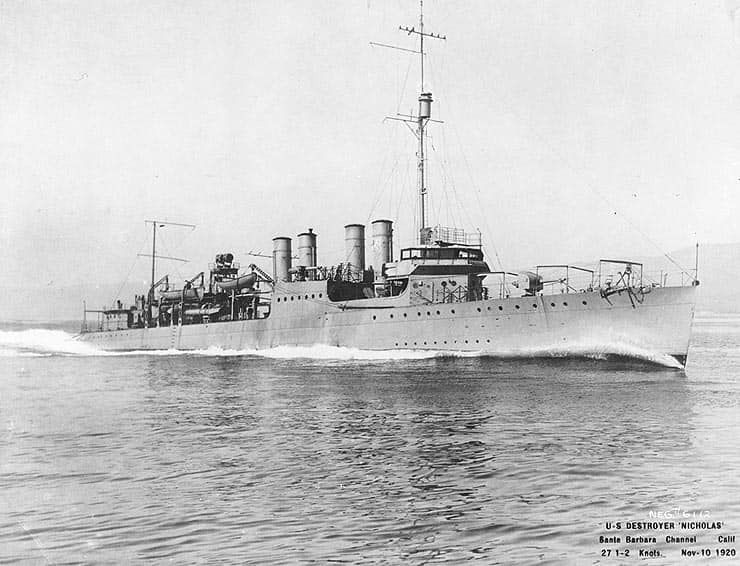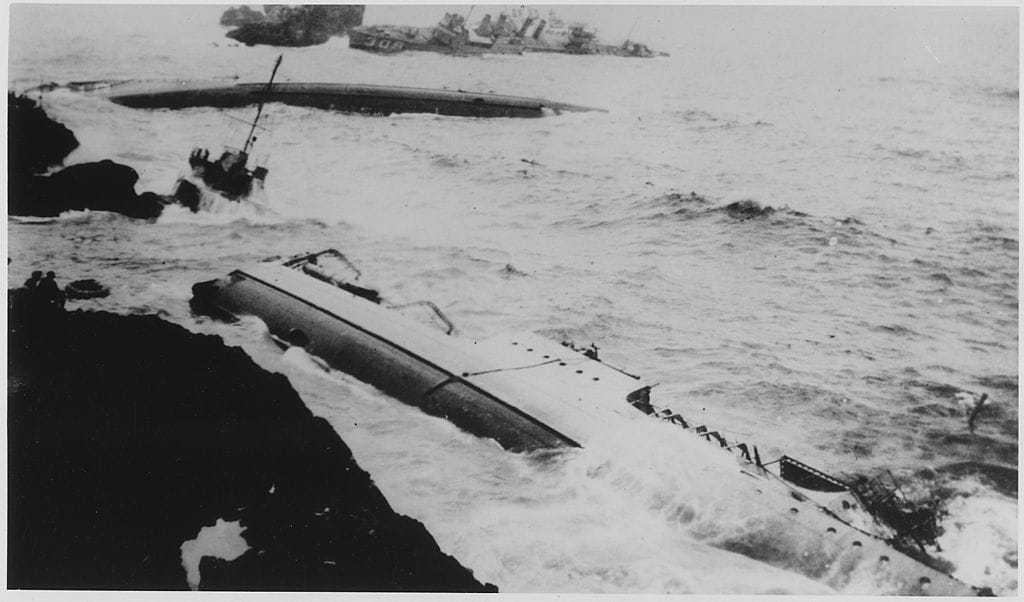That Time an Earthquake in Japan Caused Several American Destroyers to Run Aground (and Sink) in California

On the evening of September 8, 1923, 14 “Clemson-class” Destroyers attached to Destroyer Squadron 11 were steaming south from San Francisco to the naval base in San Diego. These relatively new vessels, less than 5 years old, were some of the more advanced vessels in the fleet at the time.
In command of the formation was CPT. E.H. Watson, who used the USS Delphy as his flagship. Watson was already a seasoned Navy veteran at this point in his life, as he had seen action in the Spanish-American War and World War One. But this was the first time he was given a unit command, so he was still somewhat green in this regard. I must also point out that “Dead Reckoning” was a common practice at this time. Basically, this was where a vessel would estimate their positions from their course and speed, as measured by propeller revolutions per minute. It may sound archaic, but it was a fairly accurate means to navigate as radio navigation was only now being introduced and was not fully trusted. Keep this in mind.
The Night of the Disaster

At 21:00 hrs (9:00 pm), the formation turned east to course 095, believing they were heading into the Santa Barbara Channel. USS Delphy was actually equipped with a radio navigation receiver, but her commanding officer, Lt. Commander Donald T. Hunter, ignored it as he believed it to be “erroneous”. He was also the squadron’s navigator, by the way.
No effort was made to take soundings of water depths using a fathometer as this would require the ships to slow down to take the measurements. Since they were operating under “war time” conditions for this exercise, Captain Watson wanted the squadron to make a fast passage to San Diego.
If they had slowed down and taken the required measurements, both Watson and Hunter would have known that instead of heading into the Channel, they were instead heading straight for Honda Point. They had made the turn too soon and didn’t realize it until it was too late.
The Tragic Outcome

The Delphy, Nicholas, Young, S.P. Lee, Woodberry, Fuller, and Chauncey all ran aground doing 20 knots. Two other destroyers, the Farragut and the Somers, also suffered some damage, but were able to free themselves from the rocks. The Young tore her hull open and capsized due to rushing water, killing 20 of her crew as a result, while the Chauncey ran aground while attempting to rescue sailors from the capsized Young. Delphy actually broke apart in the surf, but not before sounding a siren in an attempt to alert the other ships. Three of her crew also died as a result.
In total, 5 destroyers and 23 men were lost, while 2 more vessels were damaged.
The Aftermath and Earthquake Connection
Obviously, a court martial was held and the commanders of each of the ships that were lost (including Watson) were held accountable. But to Captain Watson’s credit, he openly took full responsibility for the disaster and was commended by his peers and the government for this, even though he was not fully to blame.
Remember when I said that an earthquake was also responsible? Well, a few days earlier, the Great Kantō earthquake had rocked Japan and is considered to be one of the strongest on record. So much so, that it caused unusual ocean currents across the Pacific region and Honda Point was no different. These currents, along with the use of Dead Reckoning, played a huge role in the disaster, along with decisions made by Watson and Hunter.
~NC









